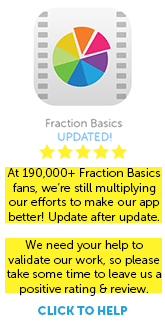
Units for the Volume of a Rectangular Prism
by A Visitor
Question
Find the volume of a rectangular prism that is 5 inches in height, 4 inches in width, and 3 inches in length. Is the answer 60 inches or 60 cubic inches?Answer
The calculated number 60 (W×L×H = 4×3×5) is correct. As for the units, you can find it by following the logic below:Imagine that you are given a number, let's say 1. In your mind, you know that it is just a number and it does not have much meaning.
Now, if I tell you the number is in inches (1 inch), you will know that the number represents length.
Next, if we can represent length with the unit inch, how do we represent the unit for area?
To answer this, let's say we have a square that the width of 2 inches and the length of 3 inches, we can calculate its area as follows:
Area = W × L
= 2 inch × 3 inch
= 6 inch2
To calculate the numbers (2 × 3 = 6) is the easy part. As for the unit, since we are multiplying two lengths with the unit inches together, logically, we can write the resulting unit as inch2 (square inches). The 2 on the unit represents area.
Similarly, for rectangular prism with 5 inches in height, 4 inches in width, and 3 inches in depth, we can calculate its volume as follows:
Area = W × L × H
= 4 inch × 3 inch × 5 inch
= 60 inch3
Applying the same logic, since we are multiplying three lengths with unit the inches together, logically, we can write the resulting unit as inch3 (cubic inches). The 3 on the unit represents volume.
Also, this site have free math lessons on volume of solids that may be of interest to you (scroll down page the see the list of lessons). The link is given below:
Comments for Units for the Volume of a Rectangular Prism
|
||
|
||


